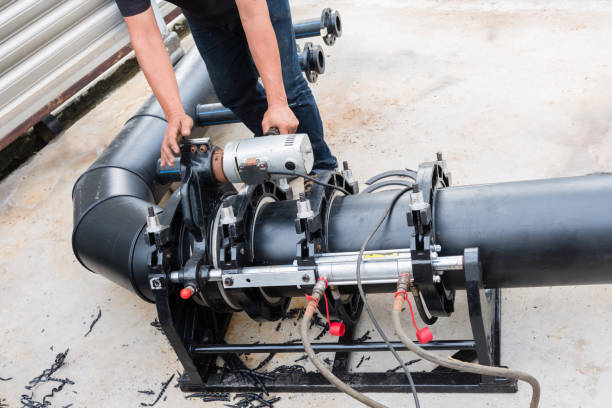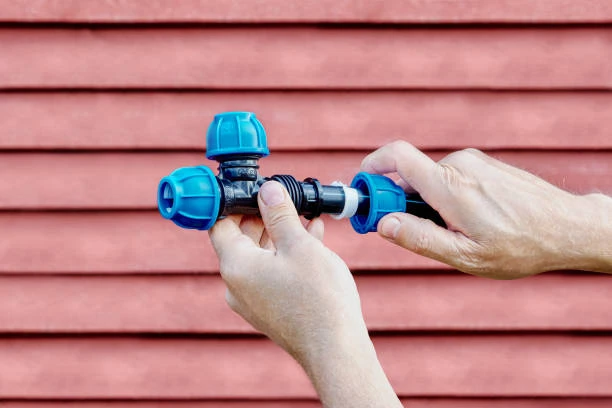In remote corners of Peru, clean drinking water often feels like a luxury. But thanks to a powerful partnership between CPChem and Water Mission, that’s changing—one village at a time. The two organizations teamed up to install sustainable water systems that rely on high-quality materials like HDPE pipe fittings to deliver safe water directly to homes, schools, and clinics.

This isn’t just a one-off charity effort. CPChem and Water Mission built a long-term solution with durability, efficiency, and community involvement at its core. Let’s dive into how they pulled this off, what made it work, and why HDPE pipe fittings played a starring role.
The Water Crisis in Peru
Many rural areas in Peru struggle with access to clean water. Families often walk long distances to collect water from rivers or shallow wells—water that carries bacteria, parasites, and harmful chemicals. Drinking it causes stomach illnesses, stunts growth in children, and forces schools and businesses to shut down during health outbreaks.
Water Mission, a global nonprofit focused on clean water access, saw an opportunity to make a lasting impact. With CPChem’s support and funding, they launched a series of water infrastructure projects across underserved communities in the Peruvian highlands and jungle regions.
But this wasn’t about dropping off bottled water or digging a quick well. They built full-scale water systems designed to last for decades.
How CPChem and Water Mission Did It
The project kicked off with on-the-ground assessments. Engineers worked alongside local leaders to understand the terrain, test water sources, and map out distribution routes. Once they designed the system, they got to work installing pipes, tanks, filters, and taps.
The team used HDPE pipe fittings to connect every part of the water network. These fittings ensured strong, leak-free joints that could handle both high pressure and rough ground conditions. Since HDPE materials resist corrosion and cracking, they offered the perfect solution for long-term reliability in Peru’s diverse climates—from the dry Andes to humid Amazonian forests.
CPChem provided more than just funding. The company also donated HDPE resin and technical support to help Water Mission and its local partners build high-quality water infrastructure. Their shared goal: provide access to clean, safe water for at least 5,000 people—and build systems that communities could manage themselves.
Why HDPE Pipe Fittings Made a Difference
So, why did the team choose HDPE pipe fittings over other options like PVC or metal? Let’s break it down:
- Durability
HDPE fittings can handle water pressure, ground movement, and temperature swings. In Peru’s mountainous and forested regions, that flexibility is key. - Leak-Free Joints
Using fusion welding and compression fittings, workers created seamless joints that don’t leak or corrode. That means more water reaches the people who need it. - Low Maintenance
Communities don’t have to worry about rust, scaling, or frequent repairs. That keeps the system running smoothly with minimal training or tools. - Lightweight and Easy to Transport
Peru’s rural areas often lack road access. HDPE pipe fittings weigh less than metal parts, so workers carried them by hand or loaded them onto mules when needed.
These advantages helped the installation teams finish faster, reduce costs, and deliver a high-quality result that wouldn’t fall apart after one rainy season.
Community Involvement Built Long-Term Success
One of the best parts of this project? It didn’t just deliver clean water—it empowered local communities to own and operate their new systems.
Water Mission trained village residents to install HDPE pipe fittings, run the water pumps, and maintain the filtration systems. CPChem helped fund these training programs, which covered everything from hygiene education to basic plumbing.
With this hands-on approach, locals gained skills, jobs, and confidence. Now, when something needs fixing, people don’t wait for an outsider—they handle it themselves.
Real Stories, Real Impact
In one community near Tarapoto, mothers no longer wake up at 4 a.m. to walk for water. Kids now spend more time in school instead of carrying buckets. Local health workers report fewer cases of diarrhea and other waterborne illnesses.
One resident said, “Before, we always feared the water would make us sick. Now, we drink from the tap without worry.”
These results didn’t happen overnight—but with the right planning, teamwork, and materials like HDPE pipe fittings, they happened in a big way.
What’s Next?
CPChem and Water Mission plan to expand this model to other parts of Peru—and even other countries in Latin America. They believe sustainable water access should reach every person, no matter where they live.
With proven materials, trained local teams, and continued support from the private sector, they can make clean water a reality for thousands more families.
FAQ – HDPE Pipe Fittings and Water Projects
Q1: Why do water projects like this use HDPE pipe fittings?
A: They last longer, handle pressure better, and don’t corrode like metal. Plus, they’re easy to install in tough environments.
Q2: Can HDPE pipe fittings handle mountain terrain?
A: Absolutely. HDPE flexes with the ground and resists cracking, which makes it perfect for uneven or shifting soil.
Q3: How long do HDPE water systems last?
A: If installed properly, they can last 50 years or more. That’s why organizations like Water Mission rely on them.
Q4: Are the fittings easy to install in remote areas?
A: Yes. You just need basic tools or fusion machines. Many locals learn how to do it after a short training session.
Q5: Where else can people use HDPE pipe fittings?
A: They work great in irrigation, sewage, industrial plumbing, and even gas lines—not just drinking water systems.


















